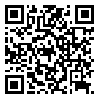1. França K, Kumar A, Castillo D, Jafferany M, Hyczy da Costa Neto M, Damevska K, et al. Trichotillomania (hair pulling disorder): Clinical characteristics, psychosocial aspects, treatment approaches, and ethical considerations. Dermatologic Therapy. 2019;32(4):12622. [
DOI]
2. American Psychiatric Association. Diagnostic and statistical manual of mental disorders. 5th edition. American Psychiatric Association; 2013.
3. Woods DW, Houghton DC. Diagnosis, evaluation, and management of trichotillomania. Psychiatric Clinics of North America. 2014;37(3):301–17. [
DOI]
4. Franklin ME, Zagrabbe K, Benavides KL. Trichotillomania and its treatment: a review and recommendations. Expert Review of Neurotherapeutics. 2011;11(8):1165–74. [
DOI]
5. Fineberg NA, Apergis-Schoute AM, Vaghi MM, Banca P, Gillan CM, Voon V, et al. Mapping compulsivity in the DSM-5 obsessive compulsive and related disorders: cognitive domains, neural circuitry, and treatment. International Journal of Neuropsychopharmacology. 2018;21(1):42–58. [
DOI]
6. Cisoń H, Kuś A, Popowicz E, Szyca M, Reich A. Trichotillomania and trichophagia: modern diagnostic and therapeutic methods. Dermatol Ther. 2018;8(3):389–98. [
DOI]
7. Meunier SA, Tolin DF, Franklin M. Affective and sensory correlates of hair pulling in pediatric trichotillomania. Behav Modif. 2009;33(3):396–407. [
DOI]
8. Azrin NH, Nunn RG, Frantz SE. Treatment of hairpulling (trichotillomania): a comparative study of habit reversal and negative practice training. J Behav Ther Exp Psychiatry. 1980;11(1):13–20. [
DOI]
9. Morris Sarah H, Zickgraf Hana F, Dingfelder Hilary E, Franklin Martin E. Habit reversal training in trichotillomania: guide for the clinician. Expert Review of Neurotherapeutics. 2013;13(9):1069–77. [
DOI]
10. Shareh H. A preliminary investigation of metacognitive therapy and habit reversal as a treatment for trichotillomania. Behav Cogn Psychother. 2018;46(1):1–20. [
DOI]
11. Rahman O, McGuire J, Storch EA, Lewin AB. Preliminary randomized controlled trial of habit reversal training for treatment of hair pulling in youth. Journal of Child and Adolescent Psychopharmacology. 2017;27(2):132–9. [
DOI]
12. Henkel ED, Jaquez SD, Diaz LZ. Pediatric trichotillomania: review of management. Pediatr Dermatol. 2019;36(6):803–7. [
DOI]
13. Sun D, Reziwan K, Wang J, Zhang J, Cao M, Wang X, et al. Auricular acupressure improves habit reversal treatment for nail biting. The Journal of Alternative and Complementary Medicine. 2019;25(1):79–85. [
DOI]
14. Lee MT, Mpavaenda DN, Fineberg NA. Habit reversal therapy in obsessive compulsive related disorders: a systematic review of the evidence and CONSORT evaluation of randomized controlled trials. Front Behav Neurosci. 2019;13:79. [
DOI]
15. Rafiee M, Shirani S. Barrasiye asar bakhshiye hypnotherapy bar bimaran mobtala be Trichotillomania (ekhtelale Kandan mou) [Evaluation of the efficacy of hypnotherapy on patients with trichotillomania (hair densification disorder)]. In: Third National Conference on Psychology and Behavioral Sciences [Internet]. Tehran: Narcish Information Institute; 2015. pp:996–1004. [Persian]
16. Saeidmanesh M, Sedaghatpur Haghighi M. Effect of hypnosis therapy on anxiety and self-esteem among stuttering children. Middle Eastern Journal of Disability Studies. 2017;7:61. [Persian] [
Article]
17. Shenefelt PD. Use of hypnosis, meditation, and biofeedback in dermatology. Clinics in Dermatology. 2017;35(3):285–91. [
DOI]
18. Fredette C, El-Baalbaki G, Neron S, Palardy V. Using hypnosis in the treatment of anxiety disorders: pros and cons. In: Durbano F, editor. New insights into anxiety disorders. Croatia: Intech; 2013. [
DOI]
19. Farhat LC, Olfson E, Li F, Telang S, Bloch MH. Identifying standardized definitions of treatment response in trichotillomania: a meta-analysis. Progress in Neuro-Psychopharmacology & Biological Psychiatry. 2019;89:446–55. [
DOI]
20. Zalsman G, Hermesh H, Sever J. Hypnotherapy in adolescents with trichotillomania: three cases. American Journal of Clinical Hypnosis. 2001;44(1):63–8. [
DOI]
21. Sadeghi M. Asar bakhshi hypnothism darmani bar behbood tan engare manfi, ezzat nafs, afsordegi va ezterab dar zanan moraje'e konande be bashgahe varzeshi [Effect of hypnotherapy on improving self-esteem, negative body image, depression, and anxiety in women referring to the health club] [Thesis for MSc]. [Kermanshah, Iran]: Kermanshah University of Medical Sciences; 2016, pp:89–93. [Persian]
22. Badeleh M, Fathi M, Aghamohammadian HR, Badeleh MT. The effect of group cognitive behavioral hypnotherapy on increasing self-esteem of adolescents. Journal of Research Development in Nursing & Midwifery. 2013;10(1):17–24. [Persian] [
Article]
23. Castelnau P, Albert G, Chabbi C, Gilles C, Deseille-Turlotte G, Schweitzer E, et al. Self-esteem reinforcement strategies in ADHD: comparison between hypnosis and art-therapy. European Journal of Paediatric Neurology. 2017;21:e143. [
DOI]
24. Naseh H. Asarbakhshiye khod hypnotism bar kaheshe ezterab va afzayeshe ezzat nafs daneshjooyan mashhad [The effectiveness of self-hypnosis on reducing anxiety and increasing self-esteem of dental students in Mashhad] [Thesis for MSc]. [Shahrood, Iran]: Faculty of Humanities, Islamic Azad University of Shahrood; 2017, pp:91–3. [Persian]
25. Valentine KE, Milling LS, Clark LJ, Moriarty CL. The efficacy of hypnosis as a treatment for anxiety: a meta-analysis. International Journal of Clinical and Experimental Hypnosis. 2019;67(3):336–63. [
DOI]
26. Delavar A. Mabani Nazari va amali pazhouhesh dar oloome ensani va ejtemaee [theoretical and practical foundations of research in humanities and social sciences]. Tehran: Roshd Publications; 2019.
27. Coopersmith, S. Self-esteem inventories. Palo Alto: Consulting Psychologists Press; 1981.
28. Narimani M, Ahadi B. Azmoon haye shakhsiyat [Personality tests]. Ardebil: Mohaghegh Ardebili Publications; 2010. [Persian]
29. Poursina M. Barrasi va moghayeseye ezzat nafs, asdordegi va pishraft tahsili danesh amoozan pesar khanevade haye talagh va aadi dar maghta'e rahnama'i shahr Tehran [Evaluation and comparison of self-esteem, depression and academic achievement of male students of divorced and normal families in middle school in Tehran] [Thesis for MSc]. [Tehran, Iran]: Tarbiat Moallem University; 2003, pp:66–9. [Persian]
30. Flessner CA, Woods DW, Franklin ME, Cashin SE, Keuthen NJ, Trichotillomania Learning Center-Scientific Advisory Board (TLC-SAB). The Milwaukee Inventory for Subtypes of tTichotillomania-Adult Version (MIST-A): development of an instrument for the assessment of "focused" and "automatic" hair pulling. J Psychopathol Behav Assess. 2008;30(1):20–30. [
DOI]

 ، محمد نریمانی*2
، محمد نریمانی*2 
 ، عباس ابوالقاسمی3
، عباس ابوالقاسمی3 
 ، سمیه تکلوی1
، سمیه تکلوی1 




